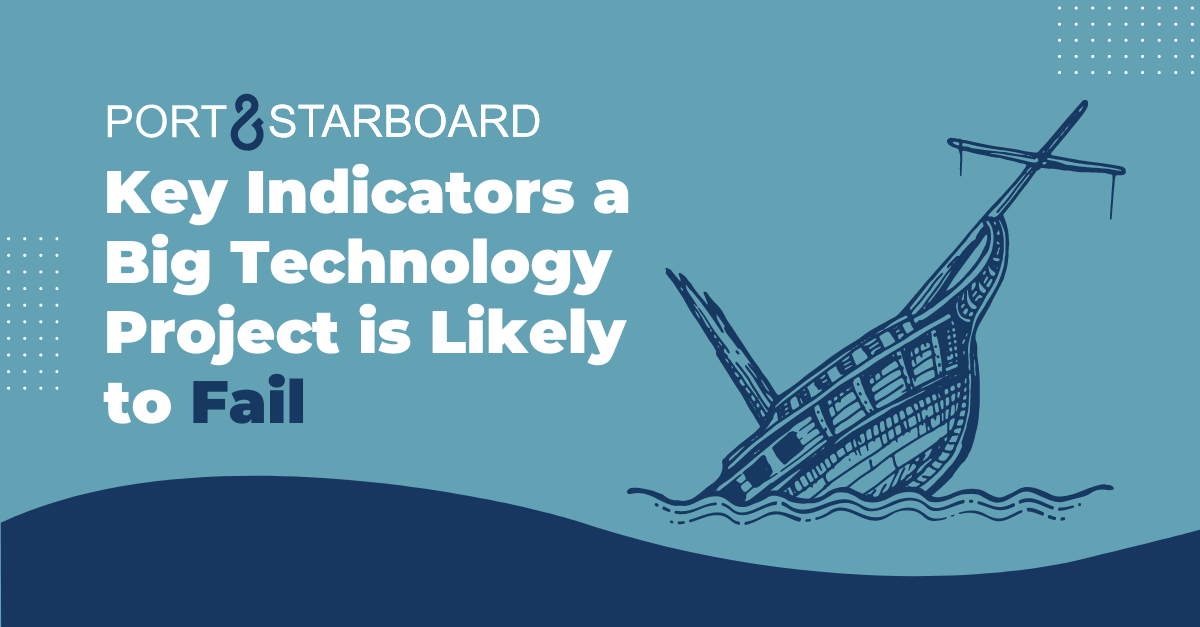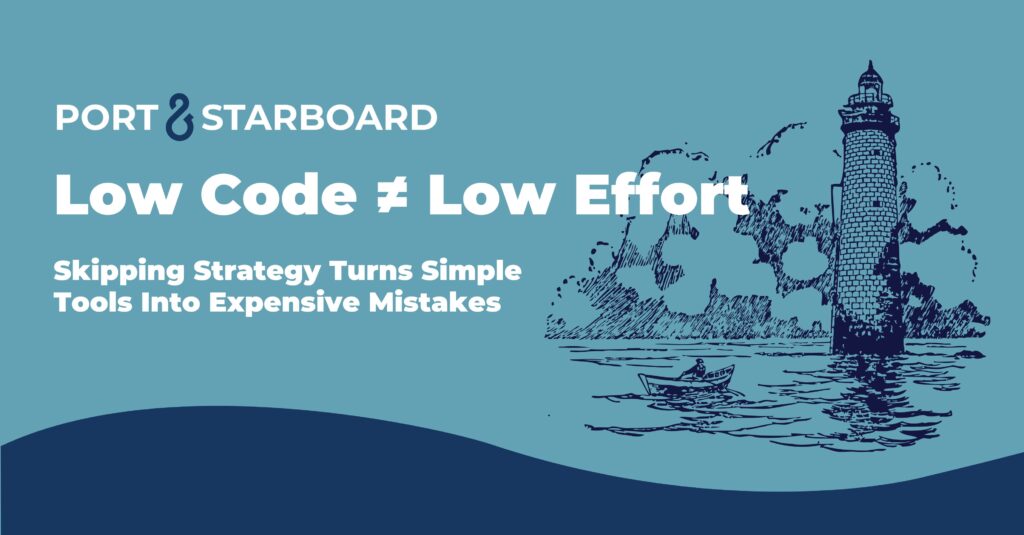Embarking on a large-scale technology project can be a game changer for your organization, but it also comes with substantial risks. Whether you’re planning a new software implementation, a system overhaul, or the integration of complex technologies, the potential for failure is real and often costly. As CEOs and IT leaders, you need to recognize the early warning signs that a project might be headed off track, so you can course-correct before it’s too late.
Port & Starboard has been managing technology projects of all sizes for more than 10 years now. Here are our top red flags that your IT project could be in jeopardy, and why addressing them early is critical to ensuring project success.
Key Indicators a Big Technology Project is Likely to Fail:
- Unclear or Changing Objectives
- Lack of clear goals or scope creep: Without clearly defined objectives, the project risks veering off track and missing key targets.
- Inadequate Planning and Poorly Defined Scope
- Weak planning: Poor or rushed planning leads to underestimating resource needs and over-promising deliverables.
- Lack of scope clarity: An unclear scope can expand uncontrollably (scope creep), derailing timelines and budget.
- Lack of Stakeholder Engagement
- Minimal involvement from key stakeholders: Lack of ongoing involvement can lead to misaligned expectations and the project not meeting business needs.
- Frequent miscommunication: Gaps in communication between stakeholders and teams increase the risk of misunderstanding and unmet requirements.
- Lack of Input or Feedback from End Users
- No user involvement: Failing to gather input or feedback from end users during the design and testing phases can result in a solution that does not meet their actual needs.
- Insufficient Resources and Unrealistic Timelines
- Inadequate staffing, budget, or technology: Resource shortages or misallocated resources lead to delays and poor-quality work.
- Unrealistic deadlines: Compressed timelines often cause rushed work, poor testing, and incomplete features.
- Lack of Executive Sponsorship
- No senior leadership buy-in: Without executive support, projects are at risk of not getting the necessary resources or attention to succeed.
- Ineffective Project Management
- Lack of experienced leadership: Inexperienced project managers struggle to guide the project, leading to disorganization and missed targets.
- Weak risk management: If risks aren’t identified and managed early, they can snowball and jeopardize the entire project.
- Technical Debt and Complexity
- Over-reliance on legacy systems or tech debt: Ignoring technical debt or relying on outdated infrastructure can create bottlenecks.
- Overly complex solutions: Solutions that are too complicated to implement or maintain increase the risk of project failure.
- Frequent Changes in Team or Leadership
- High turnover: Changing team members or leadership frequently can cause knowledge gaps, loss of continuity, and miscommunication.
- Poor Testing or Lack of Quality Assurance
- Inadequate testing: Rushed or insufficient testing increases the likelihood of undetected issues, causing failures post-launch.
- End-User Resistance or Lack of Adoption
- Resistance to change: If end users resist the new system, adoption will suffer, potentially leading to project failure.
- Ignoring user feedback: Failing to involve users in testing and feedback phases results in a system that doesn’t meet their expectations.
- Failure to Measure Success or Progress
- No clear metrics or KPIs: Without defined success metrics, it’s hard to gauge if the project is on track.
- Lack of regular reporting: Inconsistent updates or reporting can prevent stakeholders from recognizing early warning signs of trouble.
- Over-reliance on a Single Vendor or Technology
- Vendor lock-in or dependency: Relying on one vendor or technology can become problematic if the vendor underperforms or their technology becomes outdated.
- Ignoring Risks or Red Flags
- Ignoring early warnings: Overlooking minor issues early on can lead to larger problems down the road.
- Failing to course-correct: If early-stage issues aren’t corrected, they often escalate, jeopardizing the project’s success.
Conclusion:
No large technology project is without its challenges, but recognizing the signs that your project may be on the brink of failure can save your organization time, money, and headaches down the road. By addressing issues like unclear objectives, insufficient resources, or lack of end-user input early on, you can avoid project failure and steer your initiative to success. Monitoring, adapting, and responding to these indicators will be crucial for ensuring your organization gets the most out of its technology investments. Don’t wait for problems to escalate—be proactive in identifying and solving them before they derail your project.




